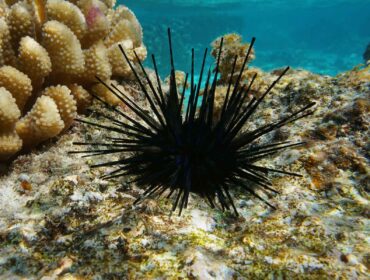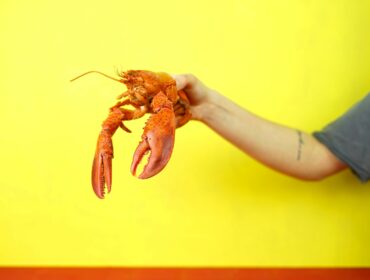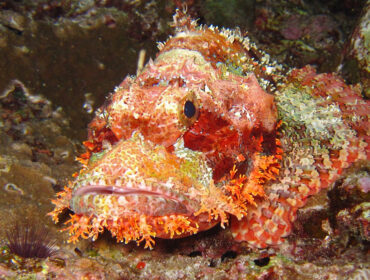Forget about little green men traveling from a distant galaxy to invade and colonize the Earth. In our own backyards, or rather our oceans, little Green Crabs have been invading the nation’s shores for years. There is a new rising wave of invasive species causing a significant impact on our marine ecosystems.
Green Crabs, Sea Urchins, and Lionfish all have one thing in common: they are classified as invasive species that wipe out or significantly impact the native marine population.
In the Caribbean, the lionfish, a voracious predator that is native to coral reefs in the South Pacific, Indian Ocean, and Red Sea, has quickly multiplied since the mid-1980s and has been threatening native reef populations ever since.
Along the West Pacific coastline of the United States and Canada, the European green crab is threatening native clam, mussel, and crab species, causing devastating destruction.
The Long-spine sea urchins are overgrazing and wiping out fields of Giant Kelp and seaweed in the Atlantic and Tasmania, destroying large areas of marine habitat.
Lionfish
The reefs around the Florida Keys and the Caribbean have, over recent years, been invaded by the Red Lionfish, which is a species not known to be native to these waters, and as a result of not having any natural predators, has been multiplying with shocking speed and has been killing off the native reef fish of the Caribbean. No one knows how these fish were introduced to these waters, however their prolific numbers and the fact that this species has no natural predators in these waters to control their multiplication, means that conservationists have had to resort to drastic measures to control the Red Lionfish.
Green Crabs
The European green crab, found native to the shores of the Eastern Atlantic, the North Sea, and the Eastern Baltic Sea, can be commonly found across Europe and is a resilient creature that thrives in colder waters. It is believed that these crabs have spread through the passage of European ships to various parts of the world, hitching lifts in ships’ ballasts as adults or as eggs.
The Invasion of green crabs began with Australia’s coasts in the 1900’s possibly arriving on English ships and has been multiplying here ever since. Green crabs appeared in South Africa and Japan in the 80s and have most recently been discovered to be thriving along the US West Coast.
These crabs feed on a diverse range of foods, such as clams, oysters, snails, other crabs, and algae. They have been competing with native red crab populations as well as with other creatures and have reduced native clam populations significantly. Washington state crab fisherman believe that the native crab populations have gone in to decline ever since the arrival of the more prolific Green Crab.
Sea Urchins
Where the population growth of sea urchins has gone unchecked, these creatures cause destructive grazing of kelp beds or kelp forests, causing vast stretches of “Sea Urchin Barrens” or areas completely devoid of marine life and vegetation. As urchins graze on the roots of large seaweed and kelp plants, their anchors to the seabed are cut, and the whole kelp dies floating to the surface. Tasmania and parts of Australia, known for their large kelp forests, have seen vast kelp areas turned into deserted landscapes where no creatures inhabit due to a lack of shelter. More recently, California’s Monterey Bay faced the great threat of losing its famed giant kelp forests as the loss of the Sea Otters that keep the urchins in check, causing the urchins to increase.





